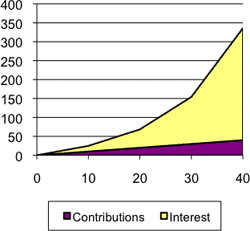Once you terminate employment with your plan sponsor, you may receive a distribution of your entire plan balance. This is a complicated matter with serious tax consequences, and we recommend you speak with a tax advisor or financial professional to ensure you make the choices appropriate for your situation. The following information is provided as a general guideline; you should consult your plan document or summary plan description for information specific to your retirement program.
Total Distribution Amount. You are typically able to withdraw 100% of your vested plan account balance. This would include all of the money you have contributed to the plan. Employer-contributed money held in your account is typically subject to some type of vesting schedule, based on the number of years you have worked with your employer. On your account statement, you should see two figures, “account balance” and “vested account balance.” Your vested account balance is how much you would be eligible to withdraw.
If you have an outstanding plan loan, the amount of money eligible for withdrawal would be calculated differently. Again, you would start with your vested account balance. However, you will need to subtract the total outstanding loan amount (since you already received this money). You will, however, be liable for income taxes on the outstanding loan amount. For more information, see our section on participant plan loans.
Qualifying Circumstances. In order to qualify for a termination distribution, you must have the intention of permanently severing your employment relationship. Examples include quitting, being fired, being laid off and disability. Examples of severance options that do not qualify you for a termination distribution include short-term disability, maternity or paternity leave, division transfers and temporary lay-offs.
Distribution Types and Consequences. There are four different options typically available to plan participants when receiving a distribution:
(1) a qualified joint and survivor annuity;
(2) a lump-sum distribution directly to the participant;
(3) a rollover to either a new retirement plan or an IRA;
(4) a combination of these options. Depending on plan provisions, some of these options may not be available to you.
A joint and survivor annuity is probably the least common option available for most plan participants and, if offered, is typically restricted to those with over $5,000 in the account. An annuity is a periodic and fixed payment for the life of the participant, with a periodic and fixed payment (equal to anywhere from 50% to 100%) for the life of the participant’s spouse. Typically, taxes are paid only on the amount distributed each year, and a 10% early withdrawal penalty (paid to the IRS) may apply if the participant is less than 59½ years of age.
In the case of a lump-sum distribution directly to the participant, the participant will receive his/her account balance, less any fees and outstanding loans, in a cash distribution. The gross amount of your distribution (including any outstanding loans) will be considered taxable income in the year in which it is distributed. You will be liable for federal (and any state) income taxes. If your account balance is over $200, the IRS requires that 20% of your account balance be withheld (and remitted to the IRS) for federal income taxes. (When you file your income taxes, you may owe more or receive a refund of part of this amount.) Additionally, if you are under age 59½, the IRS will impose a 10% early withdrawal fee on your gross distribution. You will be responsible for this amount when you file your income taxes. (There are a few, very limited exceptions to the early withdrawal penalty, the most common of which is a distribution made to an “employee after separation from service after attainment of age 55.”)
To avoid federal (and state) income tax liability, as well as the 10% early withdrawal penalty, participants can “rollover” their plan balance to another employer-sponsored plan or to an IRA. You will need to contact the plan administrator of the plan you wish to transfer the money to ensure they will accept the funds. The receiving plan must be of the same plan type (e.g., you cannot roll money from a defined benefit plan to a 401(k) plan). If you do not have an employer-sponsored retirement program that will accept your rollover, and you still wish to avoid income tax liability, you may rollover your plan account into an IRA. You should consult a tax advisor or trained professional associated with an institution that offers IRAs to be ensure the right type of IRA is set up to accept your funds.
In most cases, you are able to split your account among several of these options. For instance, you may choose to take a partial lump-sum distribution and a partial rollover, leaving you with a portion of the account balance (and taxes and penalties) and placing the rest in a rollover IRA.
Doing Nothing. If your account balance is under $1,000, many employers opt to “force out” participants so they are not responsible for the administrative fees that accompany the maintenance of these accounts. So, if you do not make a decision about what to do with your account, chances are you could receive a lump-sum payment made directly to you. You will be responsible for income taxes and the early withdrawal penalty.
If your account balance is between $1,000 and $5,000 and you do not make an election, the employer has several options which vary from plan to plan. Your employer may choose to “force out” the account balance, as described above; leave the account balance in the plan; or transfer the account to an IRA. The action taken on your account is stated in the plan’s administrative procedures. You should consult your plan administrator to find out which option will be taken if you do not make a decision.
If your account balance is over $5,000, the employer is required to leave your account in the plan, with few exceptions (such as a plan termination). However, you may be charged a reasonable administrative fee to help defray the costs of maintaining this account. More information is available in your Summary Plan Description. Login to your account to view this document or contact your employer for a copy.





